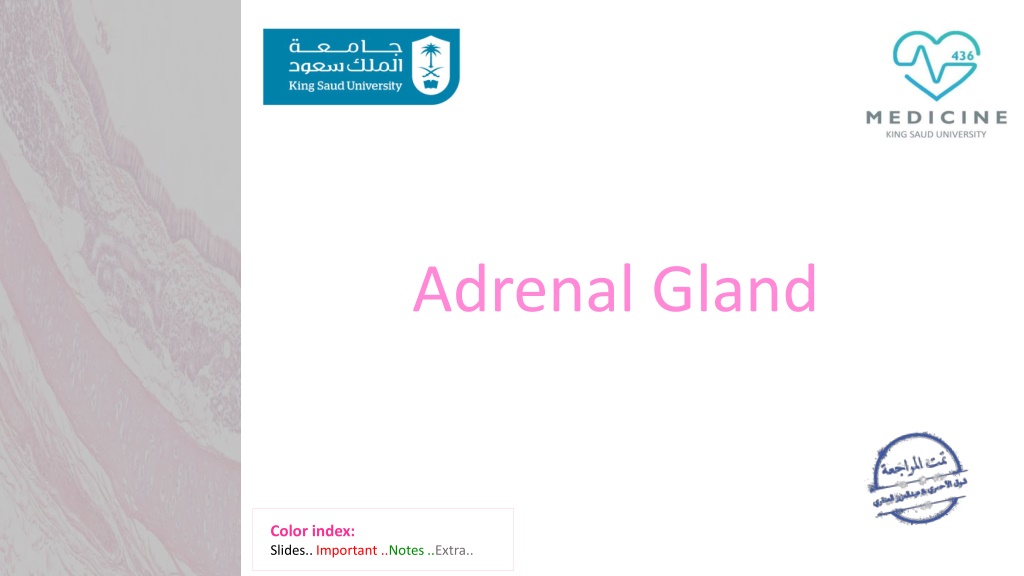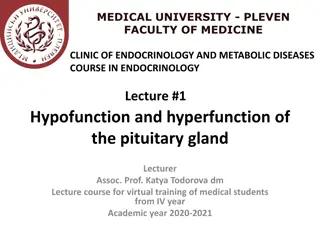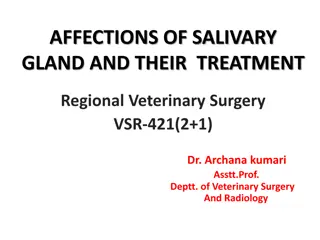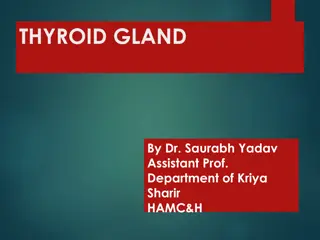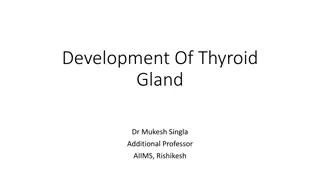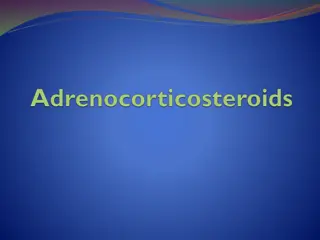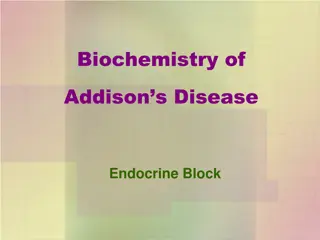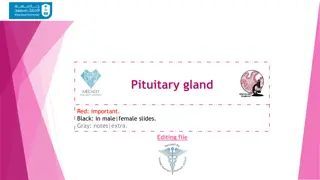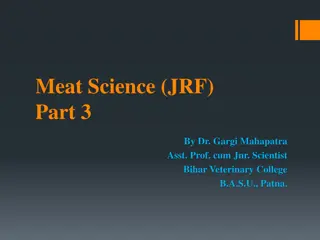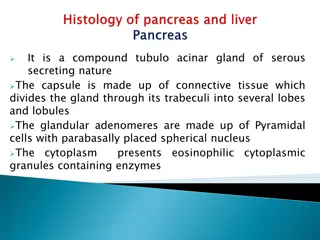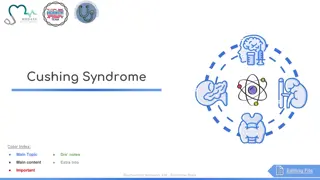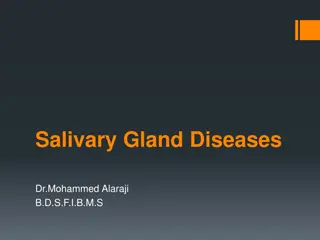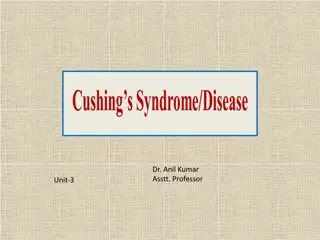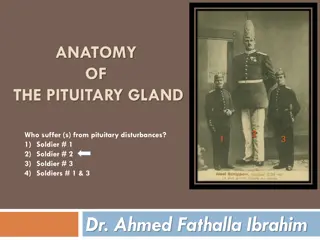Adrenal Gland
This content delves into the detailed structure and function of the adrenal gland, focusing on the differentiation between the cortex and medulla, the histological features of each zone, and the hormones produced. From the distinction of various cortical layers to the role of chromaffin cells in the medulla, this informative resource provides a comprehensive overview of adrenal gland anatomy and function.
Download Presentation

Please find below an Image/Link to download the presentation.
The content on the website is provided AS IS for your information and personal use only. It may not be sold, licensed, or shared on other websites without obtaining consent from the author.If you encounter any issues during the download, it is possible that the publisher has removed the file from their server.
You are allowed to download the files provided on this website for personal or commercial use, subject to the condition that they are used lawfully. All files are the property of their respective owners.
The content on the website is provided AS IS for your information and personal use only. It may not be sold, licensed, or shared on other websites without obtaining consent from the author.
E N D
Presentation Transcript
Adrenal Gland Color index: Slides.. Important ..Notes ..Extra..
Objectives : Objectives : By the end of this lecture, the student should be able to describe: 1. Differentiate between adrenal cortex and medulla. 2. Identify the histological features of each cortical zone and its cells. 3. Identify the histological features of the medullary cells
All adrenal gland hormones are steroids in origin. Stroma I. Cortex that is composed of: A-Zona glomerulosa. B-Zona fasciculata. C-Zona reticularis. Adrenal gland is formed of Parenchyma that is divided into: Mnemonic: GFR which is the flow rate of filtered fluid through the kidney. II. Medulla Follicular cells Colloid
Adrenal cortex *We can differentiate between the layers by the cell arrangement. 1. Zona Glomerulosa: 2. Zona Fasciculata (Spongiocytes): 3. Zona Reticularis: Is formed of clusters of small columnar cells that are rich in SER and mitochondria for steroid synthesis. Produces Mineralocorticoids e.g. Aldosterone Hormone; {Reabsorb all the remaining sodium, and passively the chloride, from the lumen of the distal renal tubules into the renal interstitium. In addition, potassium and hydrogen ions are actively secreted into the lumen). It is the intermediate and the largest layer of the cortex. Formed of columns of large polyhedral cells that are separated by longitudinal sinusoidal capillaries. Its cells are rich in: Lipids so they appear empty in sections (spongiocytes). Mitochondria ( withtubular cristae), SER and lipofuscin pigments. Its cells secrete Glucocorticoids. It is regulated by ACTH of pituitary. Fasciculata = column They look like air bubbles with spaces for blood capillaries. It is the innermost layer of adrenal cortex. It is formed of anastomosing cords of deep acidophilic cells. With no specific arrangement. acidophilic compared to fasiculata Its cells contains few lipofuscin and lipid droplets. The cells secrete Androgens. Androgens are higher in males because they re secreted by testes as well. 1. 2. 3. Spongiocytes Zona Reticularis: E/M of spongiocytes.
Adrenal Medulla o It is the central portion of the adrenal gland. o It is completely invested with adrenal cortex (there is no CT. septa between cortex and medulla) When sympathetic activity increases > cortisol level increases It contains: 1.Chromaffin cells (Pheochromocytes): 2. Sympathetic ganglion cells: Contains granules of catecholamine as that of sympathetic nervous system. They produce epinephrine and norepinephrine. They stain deep brown with chromic salts. Basophilic High amount of RER for synthesis of tyrosine to make catecholeamine Relay on chromaffin cells. NEURONS IN ADRENAL MEDULLA
MCQs 4\Chromaffin cells produce: A-glucocorticoids. B-epinephrine. c-acetylcholine. 1\Which one of following layers Produce mineralocorticoids: A-Zona reticularis. B-Zona glomerulosa. C-Zona Fasciculata. 2\the largest layer of the cortex: A-Zona Fasciculata. B-Zona glomerulosa. C-Zona reticularis. 5\Medulla of adrenal gland is: A-the peripheral portion of the adrenal gland. B-the outermost portion of the adrenal gland. C-the central portion of the adrenal gland. 3\The cells secrete androgen in which of following layers: A-Zona reticularis. B-Zona glomerulosa. C-Zona Fasciculata. 5-c 4-b 3-a 2-a 1-b
Thank you & good luck - Histology team Done by: Amal AlGarni Duaa Walid Heba AlNasser Shahad AlAnzan We am Babaier Team leaders: Rana Barasain Faisal Alrabaii References: References: Females and Males slides. Doctors notes
